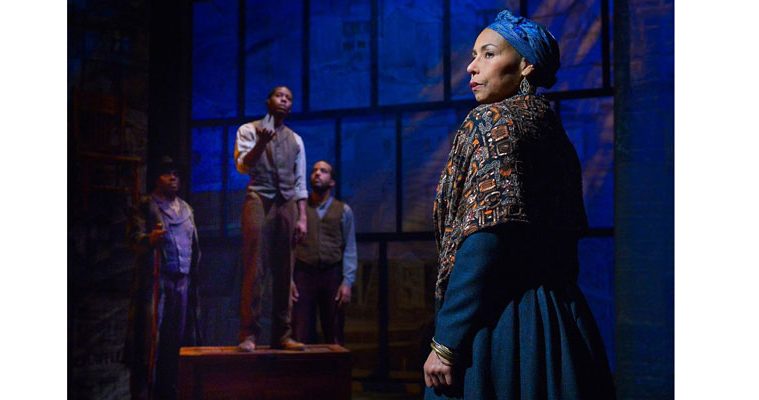
Set in 1904, August Wilson’s Gem of the Ocean is the ninth work in his Century Cycle, which has recorded the American Black experience and helped to define generations. In this piece, Aunt Esther, a fiery 285-year-old matriarch, welcomes into her Hill District home Solly Two Kings, who was born into slavery and scouted for the Union Army, and Citizen Barlow, a young man from Alabama searching for a new life. Marin Theatre Company recently produced Gem of the Ocean, and we are proud to share their dramaturg’s pieces on the impact and influence of Wilson’s work. Be sure not to miss this three part series.
Marin Theatre Company’s production of Gem of the Ocean under the direction of Daniel Alexander Jones boldly employs a theatrical jazz aesthetic, an artform uniquely suited to expressing the complexities of Black lives. Theatrical jazz creates a collage of images, sounds, and time that allow the past, the present, and the future to provocatively co-mingle. When Aunt Ester says, “I got a strong memory. I got a long memory,” she conjures a history of Blackness that extends before the play begins, to our current moment, and beyond. The non-linear, physically abstract nature of much theatrical jazz permits the spirituality of August Wilson’s work to be an everyday expression of Blackness, not “supernatural” or “magical realism,” but Black Realism where spiritual transformation and improvisational innovation are a way of life.
Each element of the MTC production acknowledges this trans-temporal reality—the set provides period features such as 1904 scenes of Pittsburgh juxtaposed against a liquid prism wall, all resting on a floor that suggests West African iconography; the lighting offers the realism of early 20th Century electricity alongside saturated lights with the flavor of neon; the actors use abstract movements against realistic dialogue to suggest the way Black life stretches beyond the bounds of realism and naturalism; the sounds move through moans, free jazz, ancient and present-day African rhythms, and ragtime; and Aunt Ester’s “long memory” acknowledges how Black disenfranchisement in 1904 continues to play out in 2016 as she wears the anachronistic images of many Black people killed by State-sanctioned violence—including Emmett Till, Mike Brown, and Aiyani Mo’Nay Stanley Jones—patched onto her skirt. These collage-inspired design choices reflect the way African Americans have woven together lives through oppression to find beauty and joy.
Theatrical jazz choices unhinge Blackness from predictable understandings and external definitions to generate a newly imagined set of possibilities. In this way, Gem of the Ocean speaks as clearly of Black agency in 2016 as it did of Black freedom in 1904.
To purchase a copy of August Wilson’s Gem of the Ocean, click here, and to learn more about licensing a production, click here.

Newly Available for Licensing – November 2025 (UK)

K-12 Spring Musicals 2026

